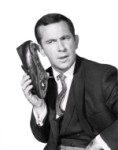Get S.M.A.R.T. (Goals & Objectives)

If a strategy and strategic plan is the road map for where the police department is going, then goals and objectives are the vehicle that is used to get there. Once the agency moves a strategic vision to a plan, the CEO and staff will develop goals and objectives to bring the strategy to life and move the agency along.
The goals and objectives will need the same amount of sincerity and planning that the rest of the strategic planning process demands. They will need to stretch and challenge the agency; there is no room for softball pitches in the game. Every base gained has to be earned. Like so many things in business and life; the more one puts in, the more one gets out.
Fortunately the business world offered up a terrific helping hand in 1981 when George T. Doran published There’s a S.M.A.R.T. way to write management’s goals and objectives in Management Review. If the goals and objectives are developed using the following considerations, they are likely to have much more value when it comes time to evaluate them.
Specific
Make sure the area that is being targeted for improvement is specific. Think of this the same way we look at making reports and conducting investigations and want to get to the heart of the matter. Who, what, when, how, where…. Who is involved in making the improvement successful. What exactly is to be accomplished? When should the initiatives take place? How will the initiatives get off the ground? Where will this take take place? Which elements are constraints; which ones have specific requirements to address? Why is this change even needed and what are we wanting to see in the end result?
Creating broad or ambiguous goals and objectives at this point will be practically useless.
Measurable
Here’s the bad news up front; this involves math. Not horrible math, more like Jethro Bodine ‘gazinta’ math. If something cannot be measured, there is no way to tell whether or not improvement has occurred.
For example, a goal to ‘improve employee morale’ sounds great, but one would be hard pressed to demonstrate success or failure. On the other hand, reducing spending, improving test scores, improving call response times or adding new equipment are well suited for measurement (however, see ‘attainable’ next).
Attainable
Remember, these are goals, not dreams. They have to be realistic and attainable. They should definitely stretch the PD, but should not be so extreme that they will not be within reach. By the same token, they should not be so below the bar that they are useless.
One important consideration comes to mind for me at this point: are there dependencies in place that exercise too much control over the goal and make it unattainable?
Always be careful about creating goals that depend on things outside of your control; budgets and available funds, other people or units, time constraints, etc… Make sure the things, and people, are lined up and ready to go. The big one that comes to mind is ‘reducing crime’. That is a tall order and if you take it on, take it realistically (see Measurable, above).
Relevant
Are these goals truly subordinated to the strategy of the police department? If the goal does not have a direct connection to the current strategic plan, then it should not be considered.
The question of relevancy should also address things like whether or not the timing is right, whether or not the return on the investment of time and money will pay off, does this goal match other efforts in play and just as importantly, whether or not you and your crew are the right people to make it all happen.
Time-bound
Every goal and objective has to be bound by time limits. A set time for completion is usually expected (many agencies utilize annual goals and objectives, as well as project specific goals and objectives), but time restraints also help in prioritization of goal elements and protect them from the consequences of procrastination or competing interests. Timelines are very helpful in order to make sure the incremental steps of a goal are moving along and lend themselves to adaptability as conditions change.
The trick to using the S.M.A.R.T. system for goals and objectives is not to use it like a checklist, but to recognize the inter-dependencies that exist within the group. Considering each item as part of a whole, allows you to make adjustments and increases the likelihood that the final goal or objective passes muster.
What experiences, good and bad, have you had with creating or executing goals and objectives?

Stephanie Robinson
Records Clerk I for Oklahoma City Housing Authority and student at Westwood College online/Criminal Justice
Thank you for sharing! Very informative article and I love the “gazintas”
28 days ago